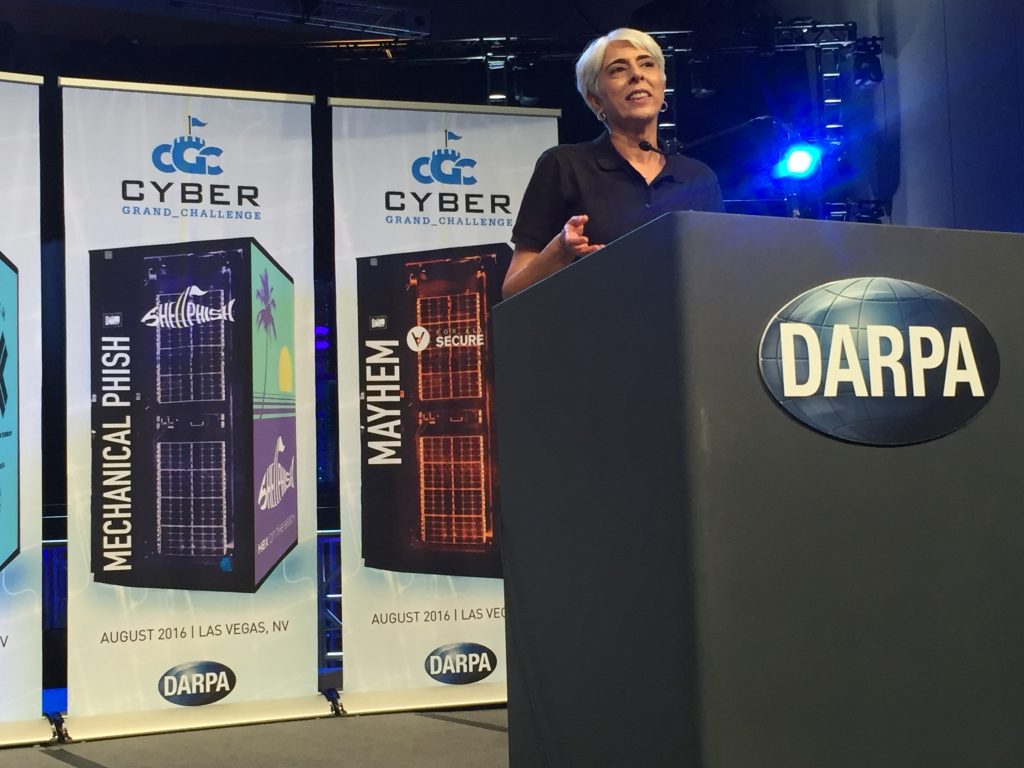Worried About Cyberhumanity? It’s Already Upon Us According To DARPA
News May 14, 2025 Damon Mitchell

In a recent article featured in Wired, Arati Prabhakar, director of the US Defense Advanced Research Projects Agency (DARPA) enlightened readers to the reality of human-machine melding already happening.

Arati Prabhakar| alchetron.com
This is reminiscent of the recent theory that domestic dogs evolved not from wolves, but something preceding both of them. Their lives intertwine with the evolution of humans. In a similar way, we need not worry the future. We’re growing with it over time.
The article in Wired registers as a TL;DR for most people, so I’ve pulled out the salient points to offer Bodyhack’s perspective.
Prabhakar successfully addresses our fears but speaks as the voice of reason in a world full of alarmists.
You could dismiss her perspective if she weren’t human and didn’t have intimate access to the most emergent technologies. If anything, it’s what Prabhakar doesn’t say that sets me most at ease.
Culture of Fear
On my parent’s dining room wall hung an awful piece of “artwork,” which lobbied that “today is the tomorrow you worried about yesterday.” It took me a few years to understand the meaning.
We toil with anxiety about a future which almost never comes to pass. At least 99% of the things we worry about become nothing. It’s the 1% that keeps us coming back for more. On probability alone, we can let relax our fears about artificial intelligence.
The concern is that super-intelligent machines will see humanity for what it is, a virus on the planet, then eradicate us. The other fear is that they will enslave us to do their bidding, a la The Matrix, Terminator or any number of post-apocalyptic tales where AI take over.
No doubt, AI is not only coming, the first seeds already exist. We are living with primitive artificial intelligence. It’s on your cell phone and likely in your car. In many ways, you’re already part of the melding and you didn’t even know it.
DARPA
In Prabhakar’s tell-nearly-all (cause she can’t tell us everything without suffering a court martial) she describes two researchers, Peter Sorger and Ben Gyori, interfacing with a computer at Harvard Medical School.
The two are solving a drug problem, where melanoma treatment fails months into a program that was previously successful.
Functioning like a smarter colleague, the machine with whom they work considers variables in their dilemma. Then it makes suggestions after working out the probability of all known variables faster than they can.
It would be like using a calculator for long math versus doing it in your head. This frees up brain power, leverages human talents with the best a machine has inside. In many ways, it’s beautiful.
“In a sense, Sorger and Gyori do what scientists have done for centuries with one another: engage in ideation and a series of what-ifs,” Prabhakar points out. “But in this case, their intellectual partner is a machine that builds, stores, computes and iterates on all those hundreds of equations and connections.”
Prosthetic Learning
Prabhakar mentions the work of another pair of researchers, combining virtual reality with chip implants to teach someone missing a limb to move a robot limb. This is not new science, but it’s newer.
In our blog titled, Harvard Medical School Is Testing Revolutionary Brain Implants, we covered how Harvard may have a new type of implant that better integrates with the central nervous system.
The problem with the more popular versions is how the body builds scar tissue on chips, eventually disabling them, mandating we remove or replace them.
With tweaking, however, it seems we are on the precipice of bypassing the human nervous system to revolutionize prosthetics. The Luke Skywalker hand is closer than it seems.
What She Doesn’t Say
The most compelling argument make by Prabhakar is what she implies but cannot say. Considering the robotics and fascinating technology that DARPA is willing to show us, the head of DARPA is privy to technology that would blow our collective minds.
Without even a nudge-nudge-wink-wink, through the lines I can hear Prabhakar saying… “look, I can tell you this is all going to make sense soon enough. You have nothing to worry about.” That, however is not what she says.
“After decades of growing familiarity, we and our technological creations are poised to embark on what is sure to be a strange, exciting and deeply commingled evolutionary path… Are we ready? Some signals suggest not.”
She doesn’t say no, but you don’t read a sense of panic in her description. Instead, I get the sense we are hearing the level thoughts of an intelligent person networked with some of our smartest people who isn’t crapping her pants.
In other words, calm down, people.
The prospective dangers of cybernetics are a train we’ll see coming down the track, long before they arrive. You’ll see.
I’ll leave you with this quote from Prabhakar, which I find exciting.
“A third wave of technological innovation is starting, featuring machines that don’t just help us do or think – they have the potential to help us be”
Source: Wired



